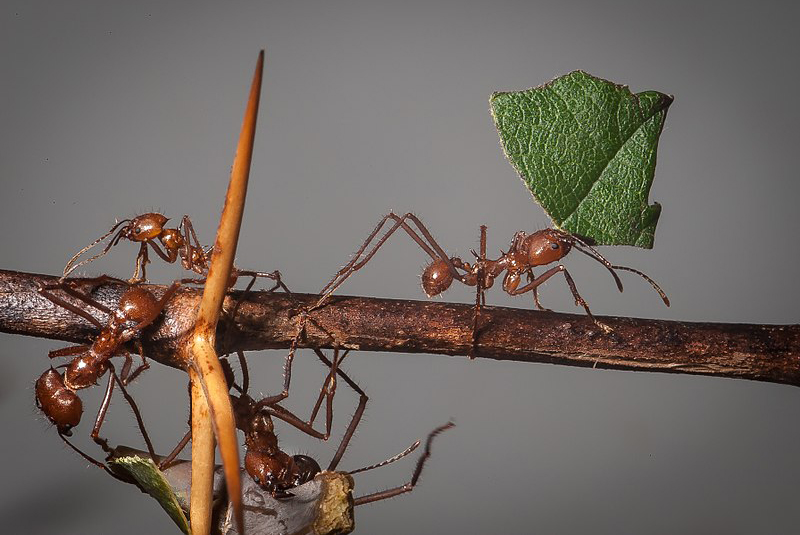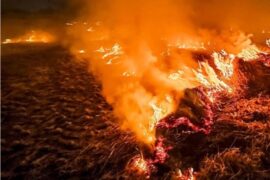Humans are not the only animals to be involved in agriculture. Three other animal groups–Bark Beetles, Termites and 240 species of Ants–have been cultivating their food for millions of years. Ants, for instance, have been avid agriculturists for nearly fifty million years; leaf cutter ants have been farming for almost eight to ten million years. But unlike human brinksmanship, their agriculture has been cooperative, adaptable, and sustainable.
Ants have built massive ‘colonies’ deep below the grounds, containing thousands of chambers–neatly-arranged rooms, larval quarters, nurseries and gardens–in which they cultivate fungi. They whiz around, collecting leaves, (flowers and other plant parts as well for some species) and grinding them into a fine paste to use it as a fertiliser to grow fungus, their food.
They keep the rooms spotlessly clean to make sure that fungi remain disease free–and grow antibiotic bacterial cultures to protect their crops from infectious pathogens and parasitic fungi. They also cultivate Nitrogenous bacteria to nourish the fungi and boost fertility.
The ants accomplish these tasks by allocating specific tasks to specific sections of the ant communities. As a result, ant colonies are segregated into co-operative guilds or “castes,” based on their size. For instance, in some tropical leafcutter ant colonies, different sections of ants play different roles.
-30-
Copyright©Madras Courier, All Rights Reserved. You may share using our article tools. Please don't cut articles from madrascourier.com and redistribute by email, post to the web, mobile phone or social media.Please send in your feed back and comments to [email protected]











